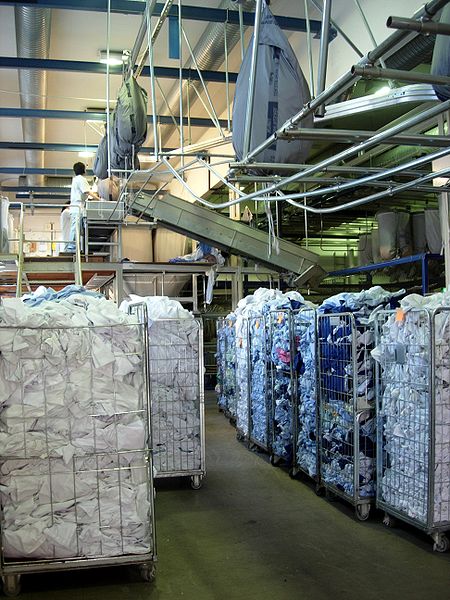Sorting and Its Impact on Your Commercial Laundry

Sorting and Its Impact on Your Commercial Laundry
While doing laundry is no one’s idea of a great time, there are some things we can do to streamline the process and improve not only the outcome but also improve the overall efficiency of the laundering operation. Establishing a laundry sorting procedure is essential for a commercial laundry operation to run smoothly and efficiently. A well-defined sorting process helps to ensure that laundry is properly cleaned and returned to the correct customer, while also minimizing the risk of damage to clothing and linens.
One of the main benefits of a laundry sorting procedure is the ability to properly care for different types of fabric. Different fabrics have specific cleaning and care requirements, and sorting laundry by fabric type allows for the use of appropriate detergents, water temperatures, and drying methods. For example, wool and delicate fabrics will need a different handling process than cotton and linen items. Sorting laundry by fabric type also helps to prevent damage from items with heavy embellishments, such as buttons or sequins, rubbing against other items and potentially causing snags or tearing.
In addition to fabric type, sorting laundry by color can also help to prevent dye transfer and keep whites looking bright. Mixing dark and light colored items can result in dye transfer, causing discoloration or staining of lighter colored items. By separating items by color, this risk is minimized and the overall appearance of the laundry is improved.
Another important aspect of a laundry sorting procedure is the separation of items by customer. In a commercial laundry setting, it is essential to properly track and return items to the correct customer. Sorting laundry by customer helps to ensure that items are not mixed up and are returned to the appropriate location.
A laundry sorting procedure can also help to improve the efficiency of the overall laundry process. By separating items into appropriate categories, the laundry can be processed in a more organized and streamlined manner, reducing the risk of errors and improving turnaround time.
Finally, sorting by soil level can prevent endless loops of rework in your laundry. If goods are presorted, heavily soiled items can immediately be sent to a machine with the correct wash formula and chemistry to vigorously attack and clean these goods while their less soiled counterparts can continue through the standard wash process. If heavily soiled items aren’t caught at the start of the wash process, it’s likely they will make it back to your customer with stains, only to be rejected and returned to your laundry process where those stained goods will loop through your laundry process and are again returned stained to your customer. It’s much easier to catch these stains at the beginning of the process, destain them, and return them clean to your happy customer. This type of rework looping can happen to commercial laundries with external customers as well as in-house laundries with internal customers and is a tremendous time and resource waster.
In conclusion, establishing a laundry sorting procedure is crucial for the effective operation of a commercial laundry. Proper sorting helps to ensure that laundry is properly cared for, minimizes the risk of damage and dye transfer, properly tracks items by customer, and improves overall efficiency. By implementing a well-defined sorting process, a commercial laundry can provide high-quality services to its customers and run smoothly.
Akash
August 9, 2023 - 5:33 am
Sorting truly is the unsung hero of efficient commercial laundry operations! This article beautifully highlights how a well-executed sorting process can lead to improved productivity, reduced energy consumption, and ultimately, happier customers. As a fellow industry professional, I couldn’t agree more with the emphasis on color-coded bins and proper classification. Kudos to the author for shedding light on this crucial aspect of commercial laundry management.
Al Adcock
August 9, 2023 - 10:13 am
Thank you for the kind words, Akash!